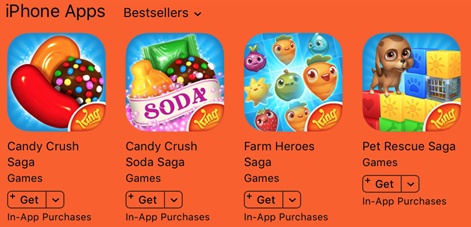Johannes Heinze is Managing Director for EMEA at AppLovin.
For a lot of indie devs out there with limited acquisition budgets, cross-promotion is a great tool for getting organic downloads.
It only costs you your time and some inventory, yet through cross-promotion, you can turn your DAUs into loyal consumers for your entire suite of mobile games. There are a ton of benefits to having multiple SKUs in various app stores, and the ability to cross-promote is one of them.
For deeper reading on cross-promotion and the benefits of employing an app portfolio, read this excellent post by Eric Seufert at Mobile Dev Memo.
Here are some tips for how to cross-promote:
1) Cross-promote where it makes sense
Run cross-promotions on unprofitable placements where you wouldn’t normally show ads.
For example, if there’s a placement after the user returns from reviewing your game, that could be a good place to show an acknowledgment such as: “Glad you’re enjoying our games! Here are some more!"
Just because a spot in the game isn’t always appropriate for ads, it could still be appropriate for a cross-promotion.
Just because a spot in the game isn’t always appropriate for ads, it could still be appropriate for a cross-promotion, which are generally seen as less intrusive by players. If players are enjoying your game, they won’t mind seeing something similar by you, a developer they trust.
2) Create a brand around your games
Players should be able to see one of your other games and recognise it as yours - in marketing parlance, all of your games should be identifiable as a single brand. This way, whether it’s through cross-promotion or just seeing your game’s icon in the app store, players will be more inclined to download.
To build a strong brand, make sure your apps use similar colour palettes and a consistent design language throughout. Make sure your app icons have the same “watermark” a la King and other large studios. You’re not just building disjointed singular apps, you are building a studio, a business, and even a whole ecosystem of branded games.

If your games don’t share a common thread because they’re in different categories or have different target demographics, then this particular branding tip is less relevant.
It’s always a good idea to have your consistent logo and brand for your games, but it’ll be less effective to cross-promote across core demographics and categories. For example, getting a casino game player to download your mid-core game is probably not worthwhile.
3) Prioritise profits over promotion
If you cross-promote with an interstitial, put it lower in the waterfall. Cross-promoting higher in your waterfall is likely to degrade eCPMs and hurt your ARPDAU. Cross-promotion can be a great way to grow your audience, but don’t prioritise it over placing ads in a way that brings in actual revenue.
4) Extra space is extra opportunity to cross-promote
Cross-promotions can make sense in a format or placement where ads don’t.
As an indie, you have to be protective of your UA budget. Cross-promotion is a great way to grow your user base without spending additional budget.
For example, a button in your settings or an “About” page with a link to more games is a good way to show your users your full portfolio of games. Or try a “FREE” button in the lobby of your game which links to your other games. This way, players get to see your other games before the settings.
If there’s a spot in your app that you know gets a lot of views but doesn’t get clicks or attention, insert a button or graphic badge there that links to your other games.
5) Focus on providing the biggest return
Remember you have a finite amount of time to spend on cross-promotion, which is why I always recommend that devs use this time on strategies that will provide the biggest return.
For example, I believe that incentivised downloads (when devs reward players for installing another of their games), while common, have small returns compared with how much effort they take. You have to set up the install to reward feature and then build a way to track it.
Plus, historically incentivised installs are low quality because players are taking “payment” to download them. Creating a simple cross-promotion tool and allowing users to decide if they want to see more of your apps often leads to more engaged users and is easy to build and track.
6) Try an array of strategies to cross-promote, but choose wisely
Cross-promotion is essentially free, and as we’ve covered here, there are many ways to do it. But you want to pick your spots and be moderate with your cross-promotion, so you don’t overwhelm the player.
Since you still want to retain them and keep them playing your game, remember to find a few good places to cross-promote and test which are the most effective at converting without affecting player retention.
When you’re an indie dev, you have to be protective of your user acquisition budget. Cross-promotion is a great way to grow your user base without spending additional budget.
But you have to do it strategically: choose the right spot in your game to cross-promote and don’t overdo it; create and maintain a cohesive brand image across your games; never cross-promote at the expense of placing ads that generate revenue and focus on the biggest return.
Follow these tips and you’ll be on your way to acquiring new users in all your games without breaking the bank.























